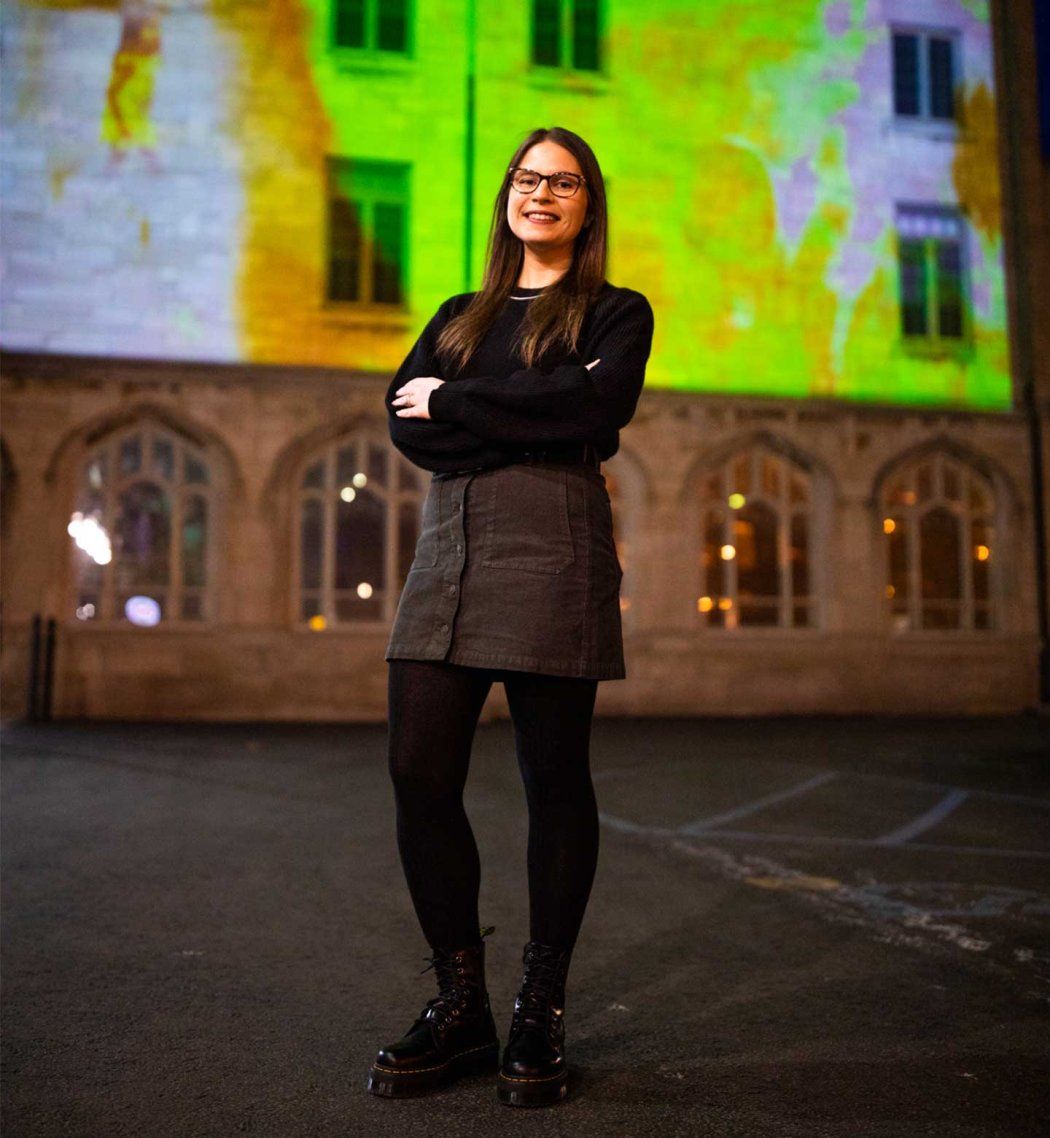Personal truth and a creative narrative are central points for any artist – and the intersection of the two is everything for Katina Bitsicas.
UCSF’s newest Artist in Residence is embarking on an ambitious, immersive project aimed at creating “a visual representation of the destruction that’s happening in our bodies and ecosystems” connected to the broad-spectrum herbicide glyphosate, which is found in the weed killer Roundup. Research suggests that exposure to glyphosate can increase risk of cancer, including Non-Hodgkin’s lymphoma, a type of cancer that begins in the lymphatic system leading to tumors throughout the body.
“The whole point is that these herbicides shouldn’t be used period,” Bitsicas said. “They’re destructive to not only humans, but also to wildlife due to the use of the chemical near water and chemical drift. You could be stepping on it in your own neighborhood park without even realizing it.”
Her personal story
Bitsicas is no stranger to this kind of art.
... this combination of art and health science relates to my artistic practice so perfectly right now.”
Much of her previous work had intertwined themes of grief and death, a combination that became all too real for the East Lansing, Michigan. native at the height of the COVID-19 pandemic. Her father, diagnosed with Mantle Cell lymphoma in December 2017, passed away in June 2020 at the age of 65. “That whole experience itself was very hard, especially because of COVID,” she said, as many of the trials he would’ve been eligible to participate in were paused or altogether canceled because of the pandemic.
So, Bitsicas did what any creative mind would do – she found inspiration in his passing. “I was always interested in normalizing conversations around death,” Bitsicas said. “It just felt even more intertwined when my father got ill and eventually passed away. I saw myself using the same techniques that I was teaching other people to use to help them process their loss in my own artistic work.”
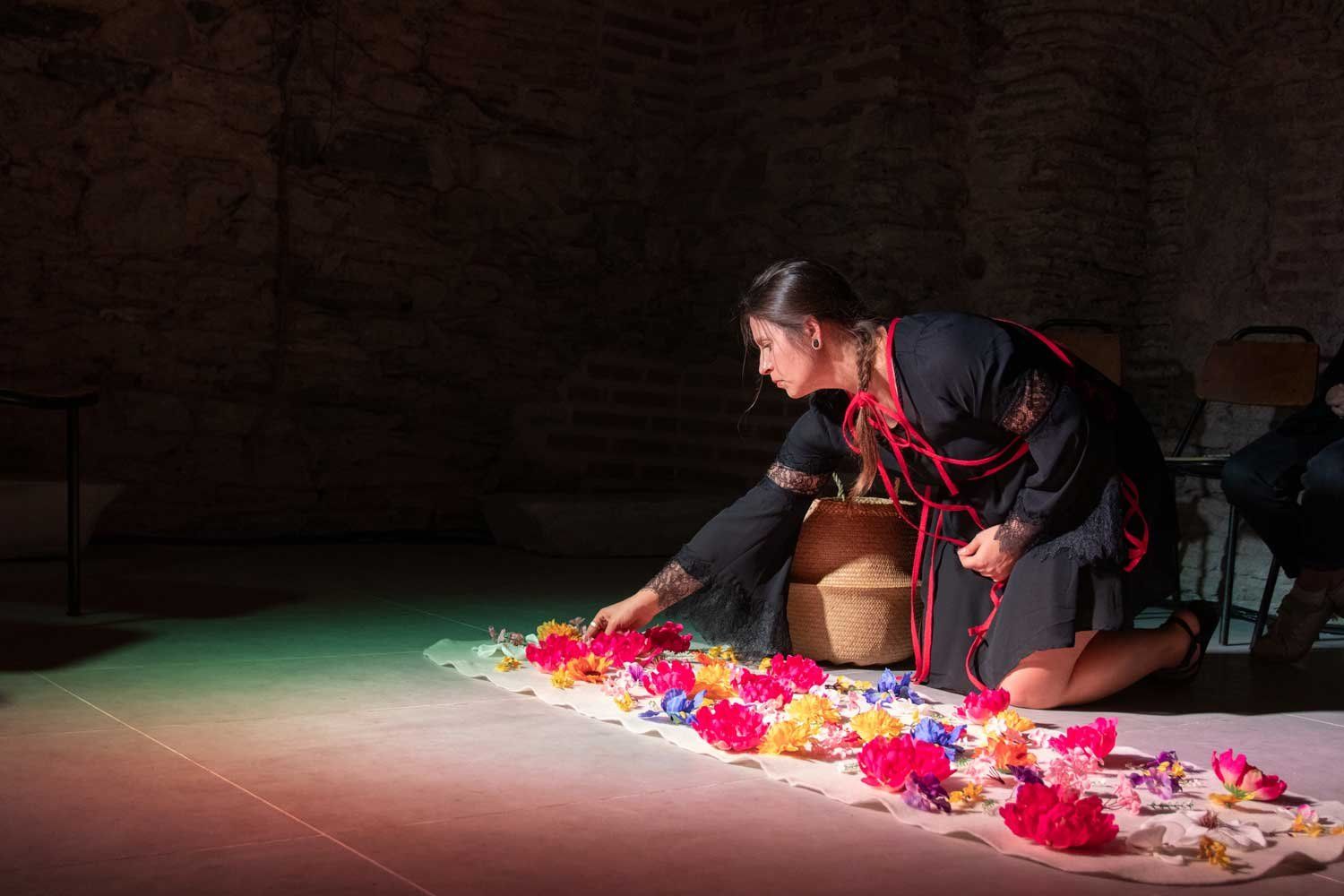
In Memoriam. Performance, projection mapped video, wool, artificial flowers, jute ribbon, 2h30m, 2022
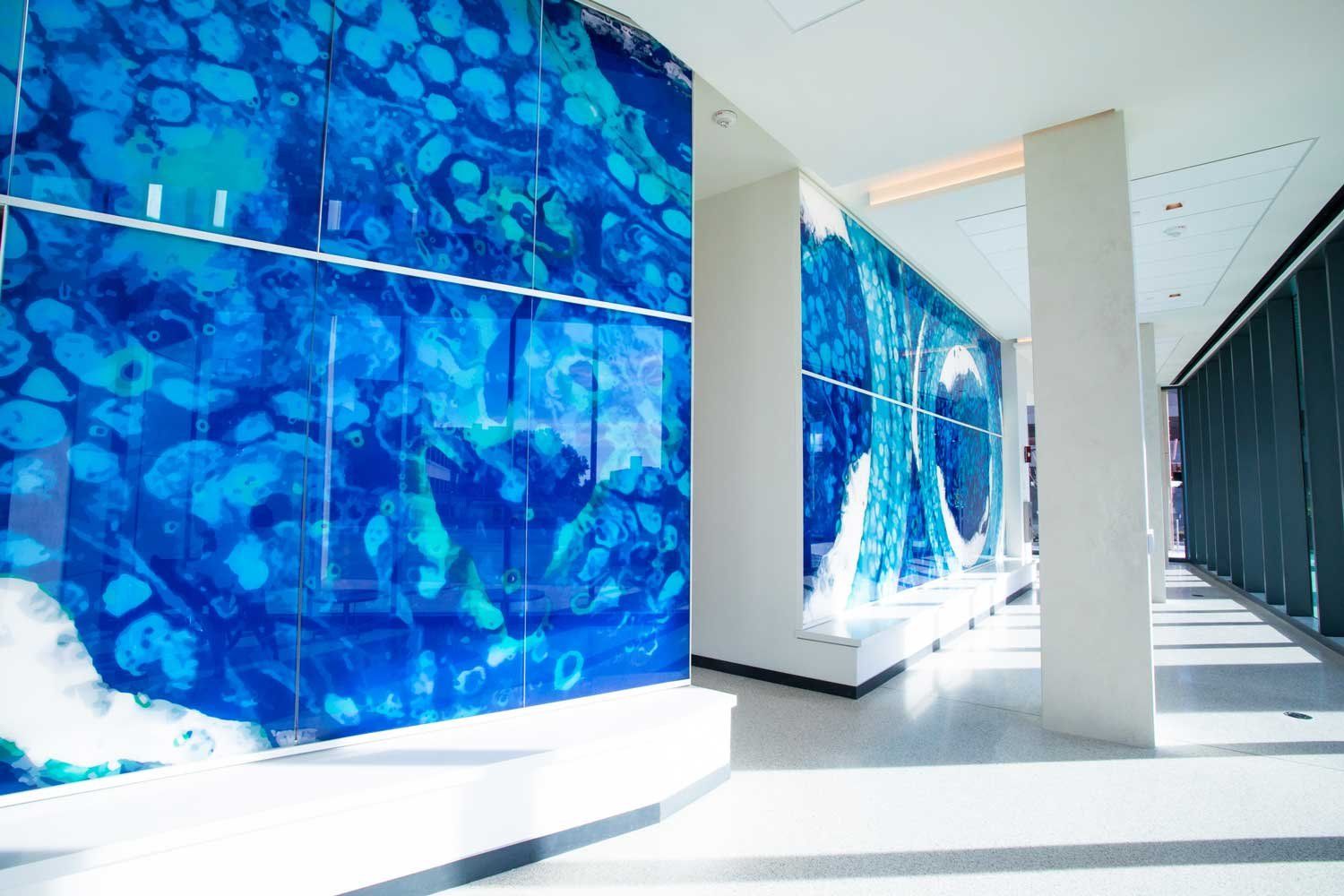
Enduring Impermanence. Photographic digital transparency print, 58.5 feet by 13 feet (Permanent installation at the NextGen Precision Health Institute, Columbia, MO), 2021
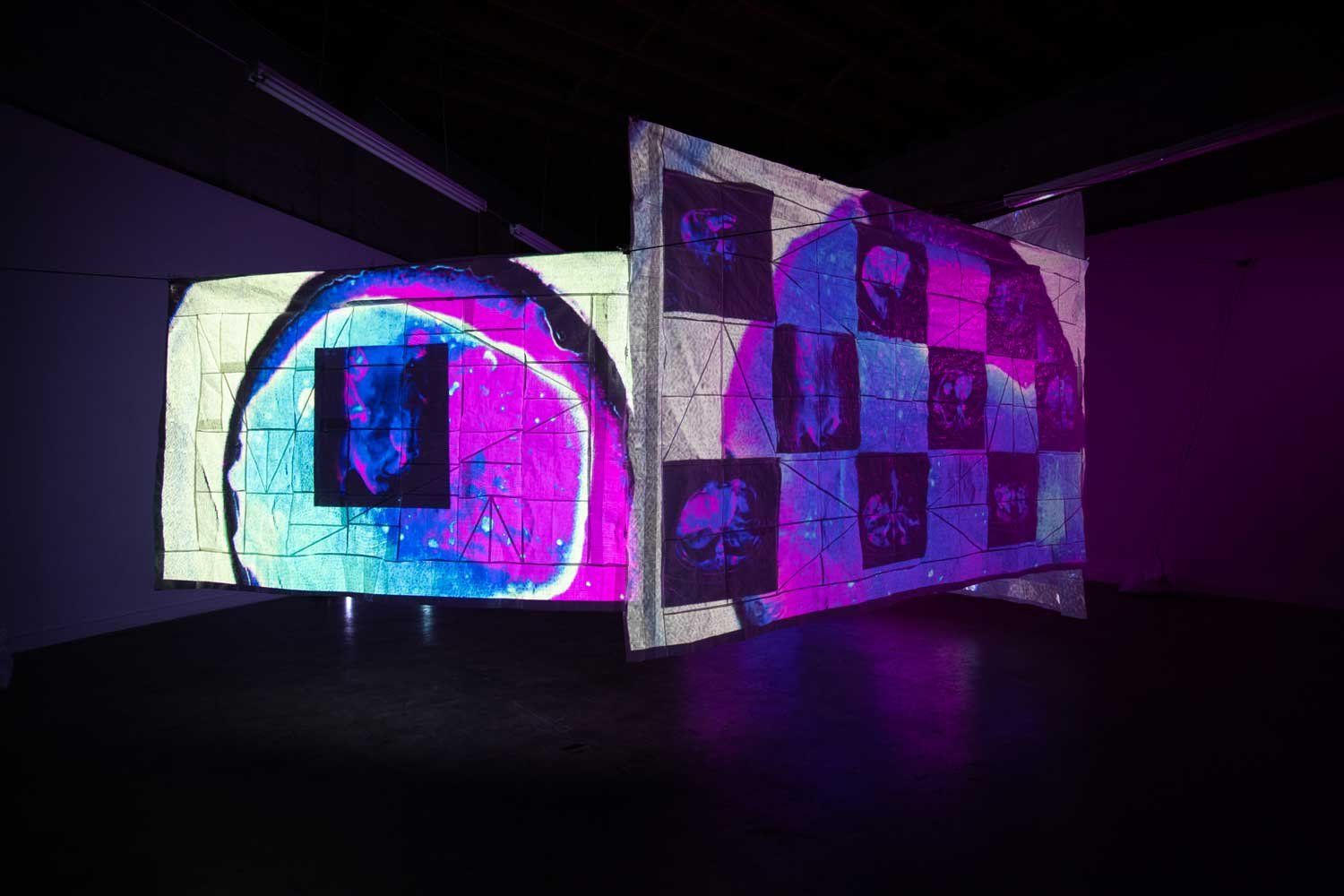
Echoes, multimedia installation using tarps, thermal emergency blankets, video, sandbags, bed sheets, paracord, augmented reality and audio. In collaboration with Becky Alley, 2022
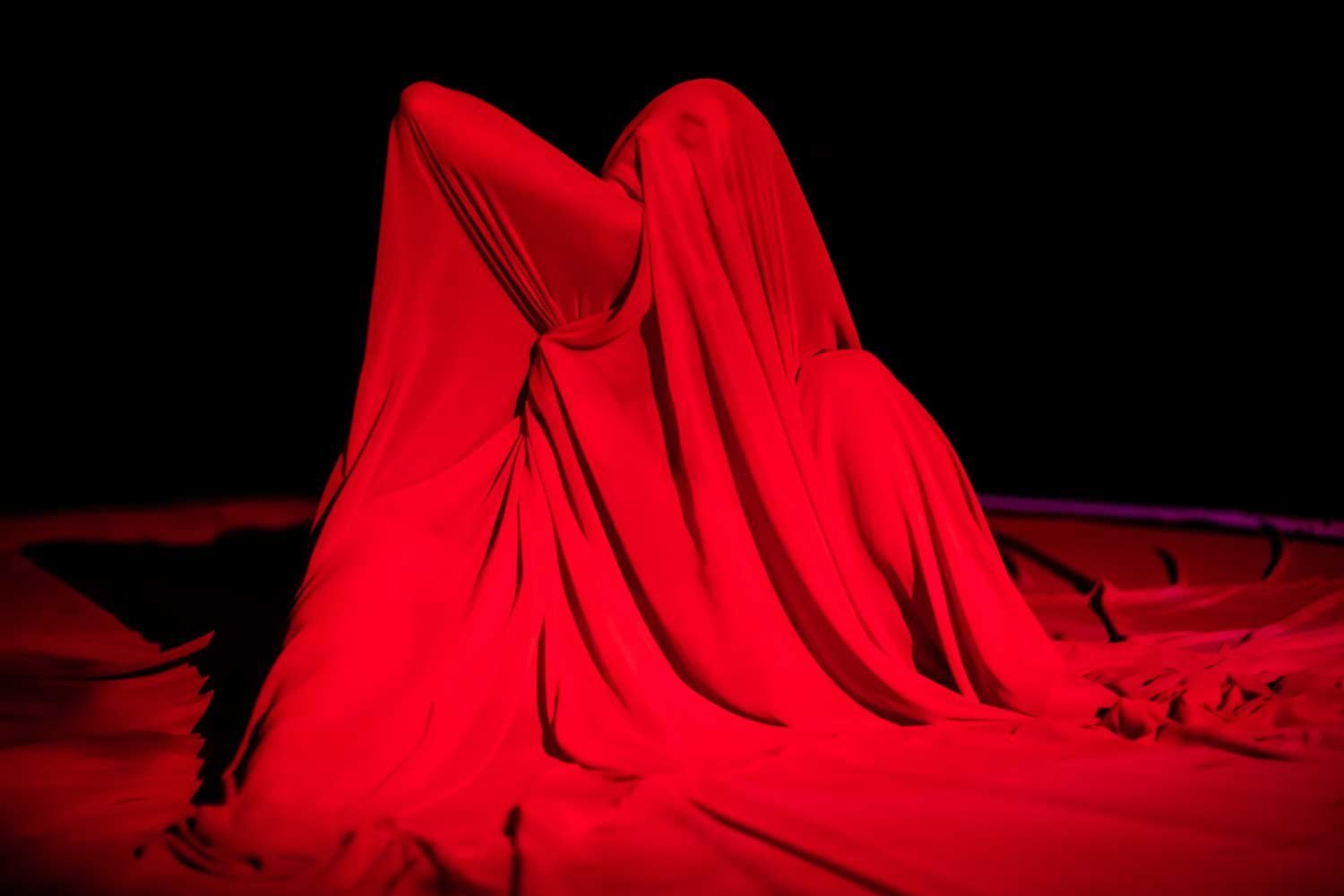
Blood Meal, multimedia performance (projection mapped video, audio, and performance art) in collaboration with Rachel Strickland, 4:04, 2021
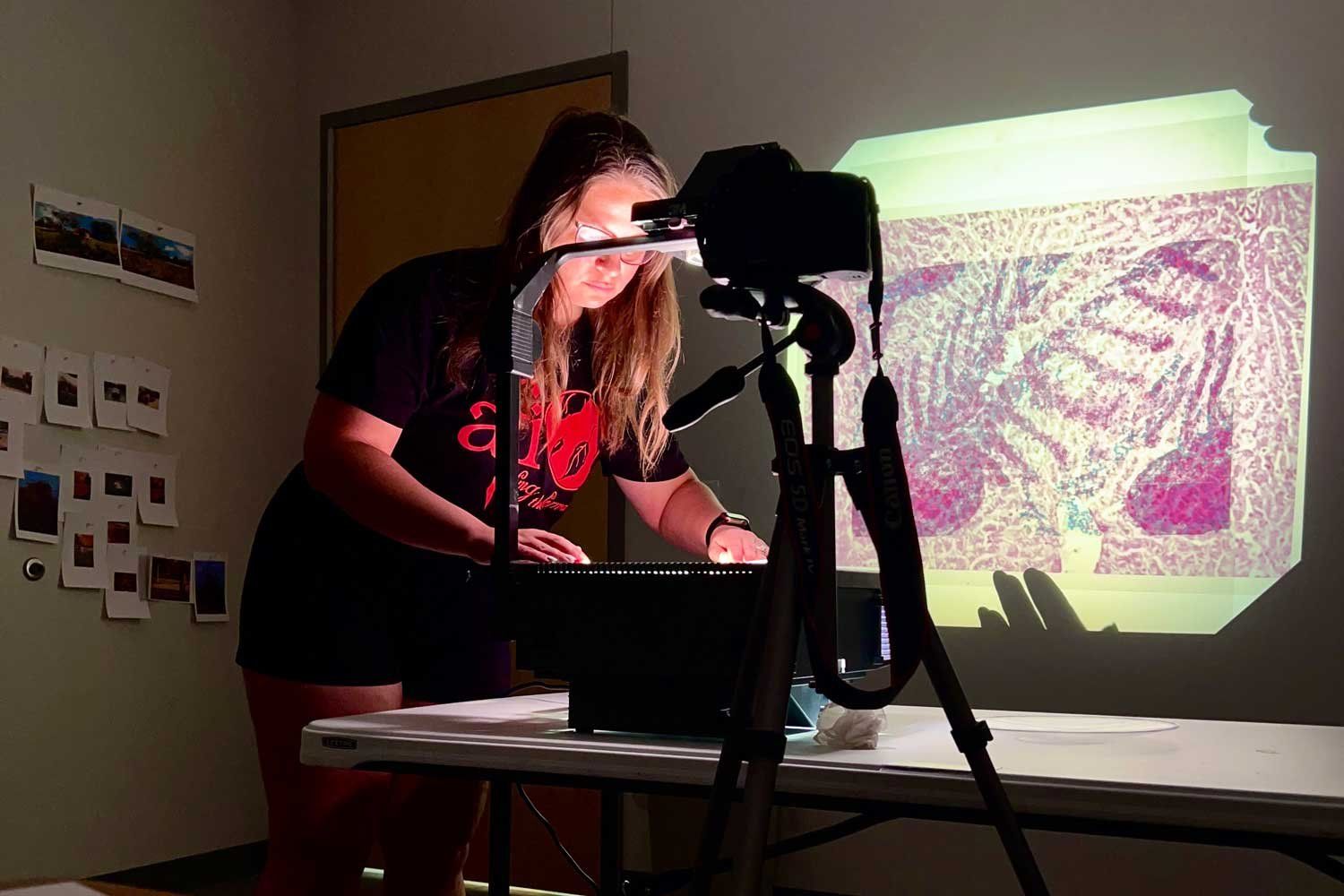
Katina Bitsicas works with transparencies to produce a new immersive video installation. Her piece “Glyphosate Dreams” is scheduled to debut at the end of her year-long residency at UCSF in June 2024.
Bitsicas is currently assistant professor and coordinator of digital storytelling at the University of Missouri in Columbia, Missouri. She moved there in 2015 as the first faculty member hired into the program. As an experienced Artist in Residence, she often seeks out residencies that are related to the work she’s interested in pursuing.
“That’s why I was interested in UCSF, specifically,” Bitsicas said. “I was like ‘Oh my gosh, this combination of art and health science relates to my artistic practice so perfectly right now.’ It’s crazy.” Started in 2020, the UCSF program gives Bitsicas access to the extensive UCSF Industry Documents Library, images and, more specifically, documents relating to Roundup’s litigation history in the Chemical Industry Documents Archive.
Bitsicas will be the second UCSF Artist In Residence to work with the Industry Documents Library as part of their project.
Bitsicas’ immersive vision
As a new media artist, Bitsicas’ repertoire has range.
She often uses a mixture of video, augmented reality, installation and live performance in her works. The project at UCSF will be no different. “It’ll include a series of large-scale physical prints,” she explained. “Those will be created from my own personal archive along with old photographs of my family’s land and documents from the (Environmental Protection Agency) that claim glyphosate is not carcinogenic.”
She plans to create an immersive installation based on her documents research and an AR filter that people can share around the world “so they can input the deterioration effect digitally onto their land wherever they are in real time.”
Bitsicas will also incorporate virtual reality into the project, a first for her.
The UCSF Makers Lab, managed by Dylan Romero, will help make some of that work come to life. “It’s exciting to work with Katina and the previous artists,” said Romero, who is co-lead of the UCSF Artist In Residence program with Associate University Librarian for Collections and UCSF Archivist Polina Ilieva. “We appreciate the artists’ willingness to experiment and explore as it relates to the technology that we support in the Maker’s Lab. We learn a lot from each artist and their respective process. We are fortunate to work with very professional, accomplished and creative artists.”
A big plus for Bitsicas has been personal access to UCSF researchers and staff working on related studies, including Yogi Hendlin, PhD, Vincanne Adams, PhD, and Tracy Woodruff, PhD, MPH. Each has done significant work relating to toxic chemicals and their effect on the human body. “I felt like I wanted to up my game with this project because there was such a level of academic rigor added into this Artist in Residence program that most don’t have. It was really funny, because as I was talking to my mom ... after I finished the application ... I thought, even if I don’t get this residency, I am still going to make this project regardless, because I was so excited and inspired by the collections and research at UCSF,” she said. “Now I’ve got it and it’s opened up so many doors and new ideas already by meeting with researchers at UCSF.”
As for the display’s impact, Romero is hopeful it stimulates others to continue exploring unique ways to present their creativity, passion and vision. “It’s an opportunity to create more awareness around the papers she’ll be studying and the entire UCSF collection,” he said. “We also hope the UCSF community will be inspired to explore some of the technology Katina plans to incorporate into her exhibit for their own teaching, learning and research.”
Bitsicas’ “Glyphosate Dreams” is scheduled to debut at the end of her year-long residency at UCSF in June 2024. Her first workshop, “Projection Mapping Magic: A Workshop on Crafting a Projected Community Quilt,” will be held on Tuesday, Oct. 17 at UCSF’s Kalmanovitz Library.
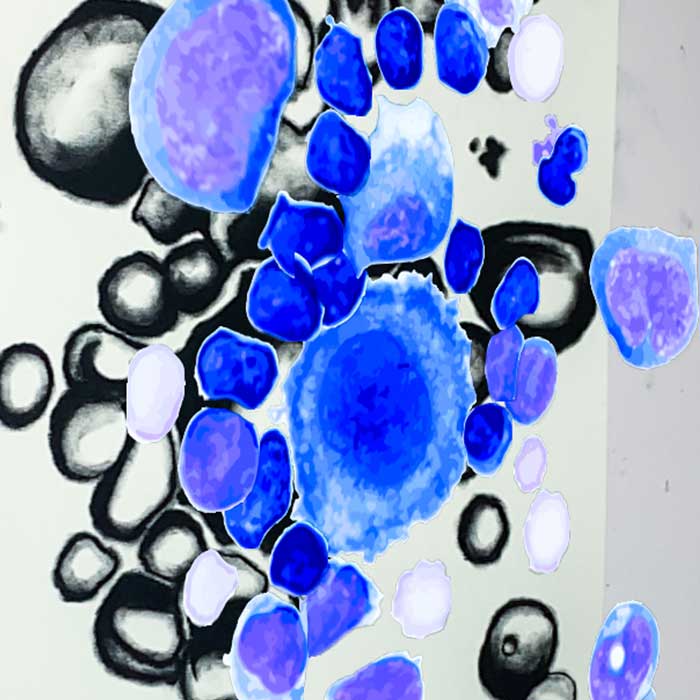
About the UCSF Artist in Residence Program
The UCSF Artist in Residence Program invites a candidate for a year-long residency, where they receive assistance from UCSF Library staff and have full access to the Library’s Archives and Special Collections and Makers Lab equipment to produce one finished work that will become part of the permanent collection of the UCSF Library.
Photo: How long after this before I’m gone? Katina Bitsicas, 2021
About the UCSF Artist in Residence Program

The UCSF Artist in Residence Program invites a candidate for a year-long residency, where they receive assistance from UCSF Library staff and have full access to the Library’s Archives and Special Collections and Makers Lab equipment to produce one finished work that will become part of the permanent collection of the UCSF Library.
Photo: How long after this before I’m gone? Katina Bitsicas, 2021
